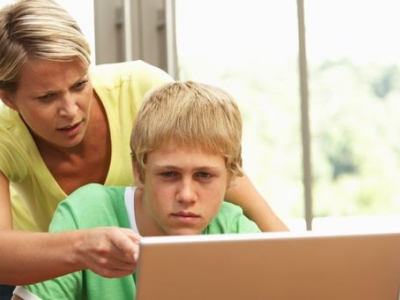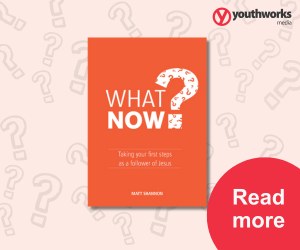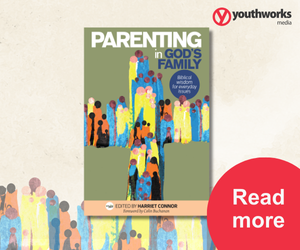
Cyber Parenting on Instagram
What parents need to know about the good and bad sides of this popular image sharing service.
I remember my father's Polaroid "Instant" camera from when I was a kid in the seventies. We would huddle around the camera waiting for the picture to slowly emerge. Thirty years later I would chuckle at my own kids when I took a photo of them with my old film camera and had to explain why they couldn't see it as soon as it was taken.
Digital photography has changed the way we take photos and share memories. In just a few short years it has gone from an expensive yet poor substitute for film, to amazing quality images taken on a tiny camera integrated into your phone.
"Instant" really is instant now, and thanks to WiFi networks and mobile internet connections, we can take an image and share it immediately with friends. One of the first apps to really harness the powerful possibilities that come from having a camera and internet connection in the same device was Instagram. This power is more than functional. Sharing a photo that captures a moment or tells a story is a thing of joy. It connects us richly through pictures to those who aren't with us. Facebook recognised the power and the value in what Instagram created, so much so that they reportedly paid 1 billion US dollars to acquire the company in 2012.
How does Instagram work?
At one level, there is not much to understand about Instagram. You could describe it as a photo-sharing app that has an inbuilt social network or a social network masquerading as a photo app. However you think of it, the way the "social network" part works is something that every parent of a young teenager needs to understand and monitor. So here's a brief introduction to Instagram, its key characteristics, and the things you should know as a parent.
Like Facebook, the minimum age for an Instagram account is 13, though I would recommend you investigate it thoroughly before allowing your child to use it at that age. Signing up for an account is easy. Very little information is collected in the process, and most of it is optional. That's a good thing. You want to encourage your kids not to fill in information just because there is a place to do so. Rather teach them to think carefully about the information they disclose when signing up to any online service.
Kids may not be aware that all the information on their Instagram profile is always public and searchable, regardless of whether they set their account to be private or not. That by the way, is the extent of Instagram's privacy settings, your account is either public or private. There aren't any more granular controls than that.
Are your child's photos visible to the world?
By default, every photo you share on Instagram is public, visible and searchable by anyone on the internet. Fortunately, the default settings at least remove the geolocation information stored in digital photos that could reveal your child's location to strangers.
However, by setting your account to private, only your followers can view your photos and you have to approve everyone who requests to follow you. Instagram's "followers" are similar to followers on Twitter. That is, they are a one-way relationship. Unlike "friends" on Facebook, where a mutual relationship is implied (if I am your friend by definition you are mine), on Instagram you can follow someone who does not follow you. When you open the app on your smartphone or iPod Touch and sign in, you see the most recent photos shared by the people you are following.
All public photos are also searchable. Searching is based on another concept common to Twitter. Photos can be tagged with a hashtag. Your kids might post a photo and tag it "#love #goodtimes with #bestfriends". There are no rules for composing hashtags other than they start with a "#".
You can also send photos to other users as a private message using Instagram direct. More importantly, anyone can send you a photo as a direct message whether or not you have allowed them to follow you.
Are there any dangers lurking in Instagram?
While Instagram has a "no adult content policy", the reality is quite different. It is impossible to manually police the 55 million images posted per day, so the only practical mechanism is to rely on reports of inappropriate content from users.
Instagram recently took a step to discourage the searching of inappropriate content by implementing a pseudo censorship approach. Since they can't control the images people post, they instead blunt the appeal by not returning results for certain hashtags. You can still tag your photo with #sexy, but if you search for it, Instagram simply declares it couldn't find any photos that matched.
Obviously #sexy is one of the milder banned tags, and they aren't all sexual. They have also limited eating disorder and self harm hashtag search results, in a graduated way. If you search for #proanorexia you will get nothing, but if you search for #thin you will get a content advisory warning and an offer for more information about help with eating disorders.
Should parents avoid or encourage Instagram?
Like any app, parents need to be informed and understand the things they are potentially exposing their kids to. They need to know how to guide their children to make wise choices and be discerning in what they post both in images and words. Most importantly though parents need to be actively involved in their child's techno world and online existence.
If you allow your child to use Instagram, make sure you sign up too and follow them. Get a sense of who they follow and who follows them. Coach them on the things they post and the things they say. You don't have to do that publicly by commenting on their photos - for some teens that wouldn't be a problem, for others it would be an embarrassing disaster. Instead, if there's something they've done on Instagram you want to talk about, coach and debrief with them face to face in your home.
For more articles from Growing Faith, subscribe to our monthly e-newsletter.
To hear about the latest books and resources from Youthworks Media, subscribe here.







